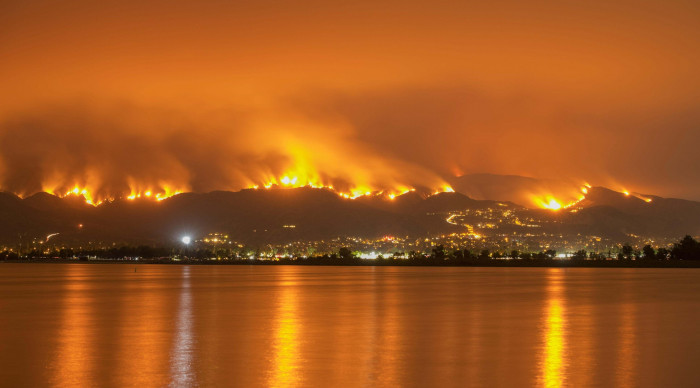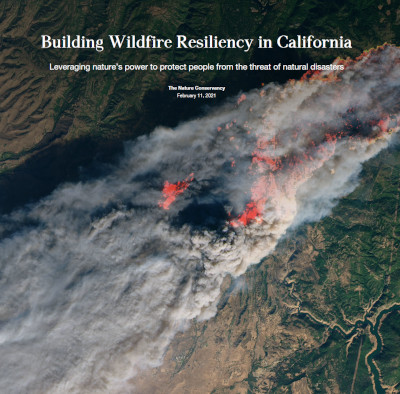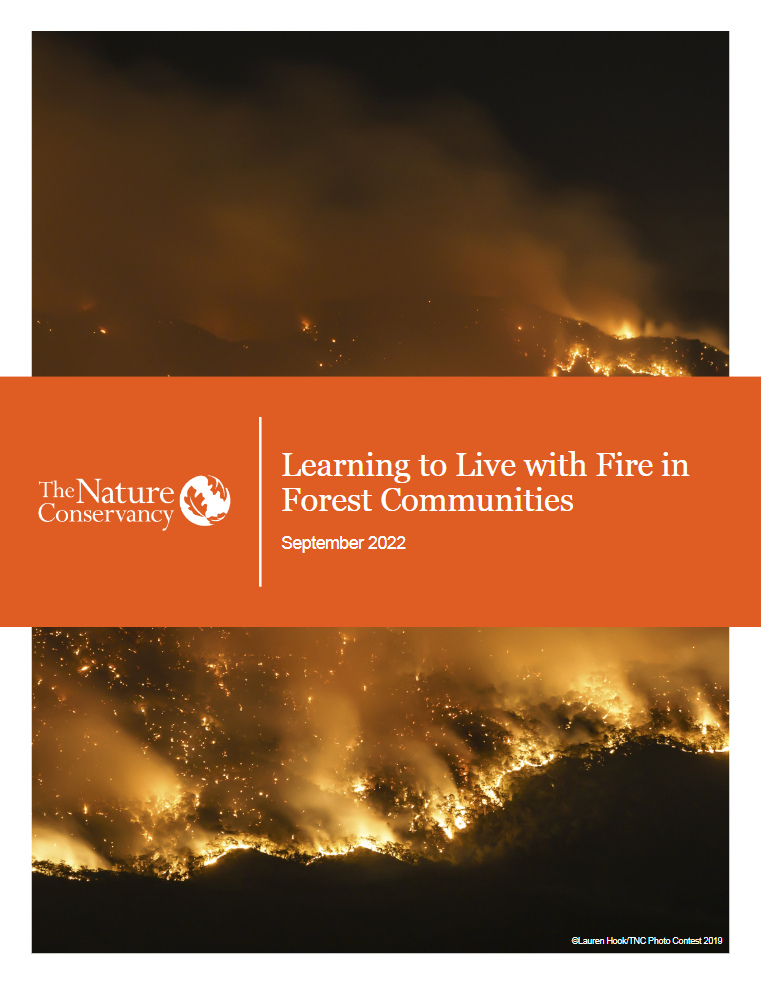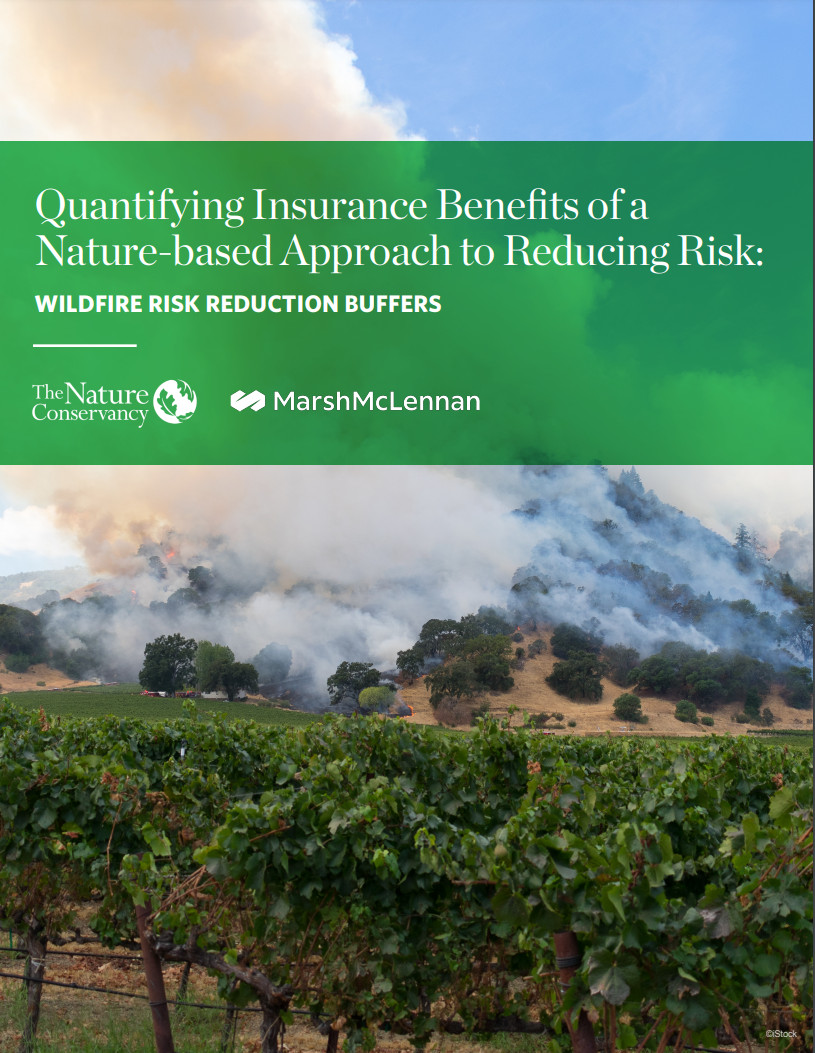How can land protection and restoration help protect communities from wildfire?

Nature-based solutions to help reduce risk of catastrophic wildfires at the wildland-urban interface. © Ben Jiang /TNC Photo Contest 2019
By Deborah Glaser
With rising temperatures and changing rainfall patterns in California, climate change is already causing more frequent and catastrophic wildfires. The drier conditions create an ideal environment for the ignition of wildfires, and a longer dry season means more opportunities for fires to occur, to last longer, and be more destructive.
We’re already experiencing the disastrous wildfires caused by climate change that scientists had predicted would not begin until the middle of the century. In 2020, wildfires burned the largest area of land on record in California – over 4 million acres from 9,000 individual fires – doubling the previous record of 1.8 million acres set in 2018.
Building residential areas adjacent to, and in, fire-prone wildlands (also known as the wildland-urban interface or WUI) creates an interaction that can be disastrous to communities—and the impacts of a changing climate only serve to increase the frequency, intensity, and extent of the damage.
Over the next 50 years, as development in California sprawls further into high fire risk zones, and as existing at-risk communities increase in population density, more people will be exposed to wildfires with potentially disastrous consequences.
The Nature Conservancy leverages land management strategies that promote community-level climate resilience to protect people and nature from the growing threat of more frequent and severe wildfires.
The Nature Conservancy and our partners know that restoring natural landscapes can mitigate the impacts of climate change.
Beyond wildfires, other natural disasters have well-established nature-based resilience strategies, with proven resilience and long-term financial benefits. With sea level rise, wetlands and other coastal habitats reduce the impact of storm surges and can protect communities from flooding. With inland flooding, the restoration of natural floodplains can protect communities from riverine flooding.
Visit this interactive StoryMap, Building Wildfire Resiliency in California, to learn more about this approach and how communities and nature benefit.

In 2018, the small town of Paradise, California, made international news when a wildfire killed eighty-six people, burned 95% of the town’s structures to the ground, and caused billions of dollars in damage. The tragedy was of extraordinary proportions.
To learn from Paradise and help reduce the risk of it happening again, TNC launched two partnerships to develop and test new approaches to (re)development. Combining internal and external expertise in fire and ecological science, conservation planning, and economic modeling, TNC produced methodologies in fire-resilient community design and insurance modeling. Those partnerships and their methodologies are highlighted below.

A 2022 report, Learning to Live with Fire in Forest Communities, highlights the science and benefits of fire-resilient community design.
First, TNC partnered with key stakeholders in the Paradise community to demonstrate how redirecting development and urban growth in the Wildland-Urban Interface (WUI), in tandem with nature-based fire buffers can protect nature, people, and communities most vulnerable to these natural disasters.
The project identified high priority parcels that, if managed appropriately, could reduce the risk of fire ignition within the town by up to 64%. These findings led to development of a series of Fire-Resilient Community Design scenarios that may be applicable to high fire risk communities across the Western U.S.
Read more about this project in Learning to Live with Fire in Forest Communities (2022). For more technical information see Nature-Based Fire Resilience Project Final Report by TNC, Conservation Biology Institute and Paradise Recreation & Parks District.

Read more about the insurance benefits of a nature-based approach to reducing wildfire risk in Quantifying Insurance Benefits of a Nature-based Approach to Reducing Risk: Wildfire Risk Reduction Buffers.
The Nature Conservancy, AECOM
With increase in devasting storms and wildfires due to climate change, we need solutions to help mitigate the impact. Traditionally, “gray” or “hard” infrastructure…Kelsey Jessup, Sophie S. Parker, John M. Randall, Brian S. Cohen, Rowan Roderick-Jones, Shona Ganguly, Jill Sourial
This paper presents results from Planting Stormwater Solutions, part of TNC’s Urban Conservation work in Los Angeles. The authors develop a methodology to prioritize siting of vegetated…Daniel Porter, Robert Longcor
Forests of the Sierra Nevada and across the western U.S. are under unprecedented threat from catastrophic wildfire, insect outbreaks, and drought. In this briefing paper, which was developed as a…Sydney J. Chamberlin, Michelle Passero, Ashley Conrad-Saydah, Tanushree Biswas, Charlotte K. Stanley
California’s natural and working lands – its forests, grasslands, wetlands, farmlands, rangeland, and urban green spaces – provide Californians with numerous environmental, social,…M. Prunicki, R. Kelsey, J. Lee, Z. Xiaoying, H. Smith, F. Haddad, J. Wu, K. Nadeau